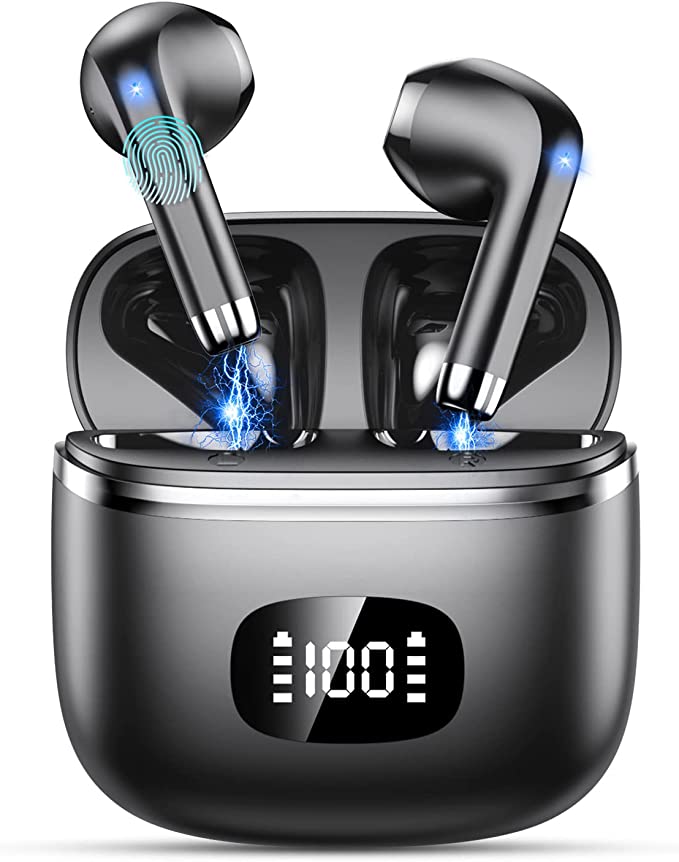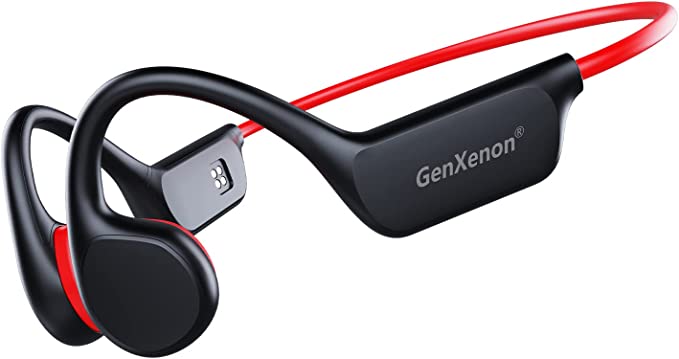iHealth PT3 No-Touch Forehead Thermometer: The Science of Quick, Hygienic Temperature Readings
Update on April 26, 2025, 5:52 a.m.
Taking someone’s temperature. It’s a fundamental act of care, a ritual performed in homes, clinics, and schools worldwide. For generations, this simple number has served as a vital sign, a quick indicator of potential illness, a guidepost for recovery. We’ve journeyed from Galileo’s early thermoscope, a cumbersome glass bulb responding to air temperature changes, through the long era of the mercury thermometer – reliable, yes, but slow, fragile, and carrying its own risks. Then came digital probes, faster and safer, yet still requiring physical contact, sometimes causing discomfort or anxiety, especially for children.
But technology, relentless in its quest for improvement, didn’t stop there. The last couple of decades have witnessed another leap: the advent of non-contact infrared thermometry. Suddenly, the possibility emerged of measuring that crucial temperature reading accurately, almost instantly, and without a single touch. It felt almost like magic. How can a device know how warm you are from a distance? Let’s delve into the fascinating science behind this innovation, using a modern example like the iHealth PT3 No-Touch Forehead Thermometer as our lens.

The Science of Seeing Warmth: Infrared Light Explained
The secret lies in an invisible world around us – the world of infrared (IR) radiation. You might know infrared from remote controls or night-vision goggles, but its connection to temperature is far more fundamental. Infrared light is simply a part of the vast electromagnetic spectrum, which also includes visible light, radio waves, and X-rays. What makes IR special in this context is its intimate relationship with heat.
Every object with a temperature above absolute zero (a chilling -273.15°C or -459.67°F) constantly emits infrared radiation. You, me, the chair you’re sitting on, the phone in your hand – we are all continuously radiating this invisible energy. Crucially, the warmer an object is, the more intense its infrared emission. Think of it as nature’s own “heat signature” – a unique, invisible glow that reveals an object’s thermal state. Infrared thermometers are designed to be sophisticated detectors, capable of “seeing” this heat signature and translating it into a familiar temperature reading. They don’t send out any rays; they passively capture the energy you are naturally emitting.
Why the Forehead? A Window to Your Inner Climate
You might wonder why non-contact thermometers like the iHealth PT3 are typically aimed at the forehead. Is it just the most convenient spot? Convenience is certainly a factor – the forehead is easily accessible on people of all ages. But there’s a physiological reason too.
Running just beneath the skin of the forehead is the temporal artery. This blood vessel is relatively close to the surface and carries blood directly from the heart via the carotid artery. Changes in your core body temperature are often reflected relatively quickly in the blood flowing through this artery. While a forehead thermometer measures the surface temperature of the skin, this reading, under proper conditions and with accurate instrumentation, can provide a reliable indication closely correlated with the body’s internal temperature. It offers a practical, non-invasive window to assess potential fever or changes in thermal state without needing to place a probe inside the body.

Decoding the Scan: Inside the iHealth PT3’s Technology - Based on Product Description
Capturing that subtle infrared signal and converting it into an accurate temperature isn’t as simple as just pointing and clicking. Real-world conditions introduce variables. The distance between the thermometer and the skin can affect how much IR energy reaches the sensor. The temperature of the room itself can also influence the reading. Modern infrared thermometers employ clever engineering to account for these factors.
Based on the product description provided for the iHealth PT3, its design incorporates a system reportedly featuring three distinct sensors working in coordination to enhance reliability:
-
The Core Task: The Infrared Sensor: This is the heart of the device. Its primary job is to detect the infrared energy radiating from the forehead skin. The product details mention it captures over 100 data points per second. This rapid sampling rate likely helps in stabilizing the signal and allows the device’s internal processor to quickly analyze the incoming thermal data. Think of it as the device’s sensitive “eye,” focused on reading that invisible heat signature.
-
Addressing the Variables: The Supporting Sensors: To move beyond a raw IR reading, the PT3 design, according to its description, includes sensors to manage environmental factors:
- The Distance Keeper: The Distance Sensor: Getting the distance right is crucial for consistent IR readings. Too far, and the signal weakens; too close, and other factors might interfere. The PT3 description states it utilizes a distance sensor to ensure the measurement is taken within the optimal range – specified as within 1.18 inches (3 cm) from the center of the forehead. This functions somewhat like a rangefinder on a camera, helping the user maintain the correct proximity for a reliable capture.
- The Environment Adjuster: The Environmental Sensor: A cold room or a warm room can subtly affect both the subject’s skin temperature and the thermometer itself. The PT3’s description indicates it includes an environmental sensor to measure the ambient temperature. This data allows the device’s internal algorithm to computationally compensate for the surrounding thermal conditions, aiming to isolate the subject’s true temperature reading more accurately. It’s like having a mini-thermostat inside, providing context for the main heat reading.
-
Synergy for Reliability (As Described): The key idea presented in the product description is that these three sensors don’t work in isolation. They allegedly function as an integrated system. The infrared sensor gathers the raw heat data, while the distance and environmental sensors provide crucial contextual information. The thermometer’s internal processor then reportedly uses all this input to calculate the final temperature reading, adjusting for the measured distance and ambient conditions. This multi-sensor approach, as outlined by the manufacturer, is designed with the goal of achieving higher accuracy and more consistent results compared to simpler IR detection alone.

The Touchless Advantage: Hygiene Meets Simplicity
Perhaps the most celebrated benefit of non-contact infrared thermometers is the dramatic improvement in hygiene. Traditional thermometers require cleaning and disinfection between uses to prevent the spread of germs – a critical step, but one that takes time and care. With a non-contact device like the PT3, there is no physical contact with the skin, virtually eliminating the risk of cross-contamination between individuals.
This is a profound advantage, especially in situations involving multiple people. Imagine using it in a family when one person is sick – no need to worry about passing germs via the thermometer. Think of schools conducting morning health checks, or clinics needing rapid, safe screening. The non-contact method streamlines these processes, making them safer and more efficient.
Beyond hygiene, the touchless approach offers unparalleled convenience and comfort. Anyone who has tried to take the temperature of a fussy toddler or a sleeping baby knows the challenge. A non-contact thermometer allows for a quick, gentle reading without disturbing or upsetting the individual. There’s no need to wake a sleeping child, no uncomfortable probing under the tongue or arm. It’s simply less stressful for everyone involved.

Designed for Life: The User Experience Features
Modern health devices aren’t just about accurate readings; they’re also about how easily and pleasantly they fit into our lives. The iHealth PT3, based on its description, incorporates several features focused on user experience:
- Instant Insight: In moments of worry or during a busy routine, waiting is the last thing you want. The PT3 is stated to deliver a temperature reading in just one second. This speed makes the process incredibly efficient, whether you’re checking a wriggling child or quickly screening multiple people.
- Clarity, Day or Night: Fumbling with a dimly lit display in a darkened room is frustrating. The PT3 features an extra-large LED display, designed for clear visibility regardless of the ambient light. Numbers are presented boldly, making them easy to read at a glance.
- The Silent Messenger: Traditional digital thermometers often signal completion with an audible beep, which can be startling or disruptive, especially at night. The PT3 uses a quiet vibration as its notification. This gentle, tactile feedback confirms the reading is complete without making a sound – a thoughtful touch, particularly appreciated when monitoring someone who is sleeping.
- Effortless Operation: Complex devices can be intimidating. The PT3 is described as having an intuitive single-button control. Aim, press, and read. This simplicity makes it accessible and easy to use for virtually anyone, from tech-savvy parents to elderly individuals who might prefer straightforward operation.

Important Note on Information Source and Accuracy
It is essential for readers to understand the basis of the information presented here regarding the iHealth PT3’s specific features and performance. This article primarily draws upon the product description provided by the manufacturer, as found on a retail platform (Amazon). Details such as the exact workings of the three-sensor system, the claim of capturing over 100 data points per second, and the resulting accuracy are based on these descriptions.
While this information outlines the intended design and functionality aimed at achieving reliable readings, this article does not incorporate independent, third-party testing data or peer-reviewed scientific validation specifically for the PT3 model, as such data was not included in the source material. Therefore, claims regarding the device’s accuracy should be understood within the context of the manufacturer’s specifications and design goals. Furthermore, it’s crucial to remember that the accuracy of any thermometer reading, including non-contact types, also depends significantly on correct user technique (following instructions for distance, aiming point, and ensuring a clean sensor) and can be influenced by individual physiological factors (like recent activity, sweating, or certain skin conditions).

Conclusion: Technology with a Human Touch
The journey from early, rudimentary temperature gauges to sophisticated devices like the iHealth PT3 No-Touch Forehead Thermometer showcases the remarkable power of applied science. By harnessing the invisible language of infrared radiation and employing intelligent sensor design (as described by its maker), such technology transforms a fundamental physical principle into a practical tool that simplifies a vital aspect of health monitoring.
The true value extends beyond the clever engineering. It lies in the reduced anxiety for parents checking on a sick child in the dead of night, the enhanced safety in public health settings, and the sheer ease of obtaining important health information quickly and without discomfort. While no single device is a panacea, non-contact infrared thermometers represent a significant step forward in making health awareness more accessible, hygienic, and seamlessly integrated into the fabric of our daily lives. They remind us that often, the most impactful technology is not the most complex, but the one that thoughtfully addresses a human need with elegance and simplicity.



















